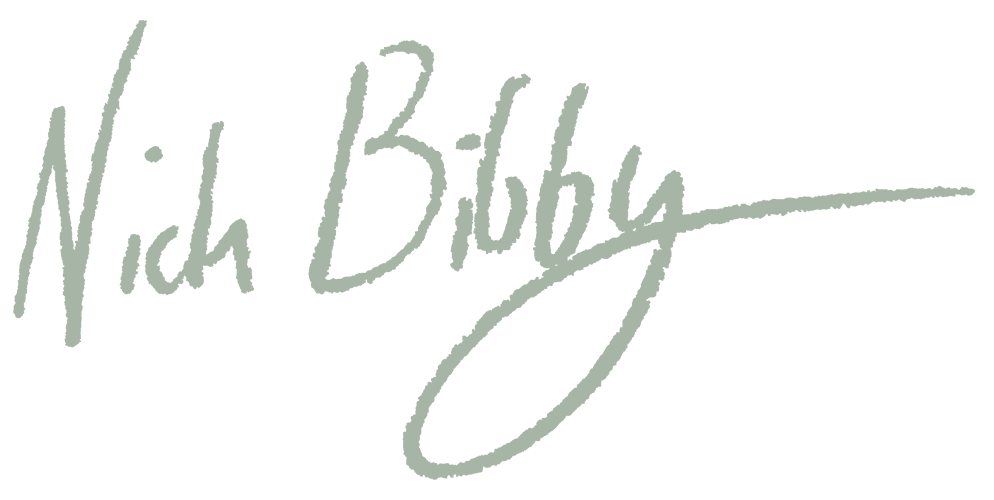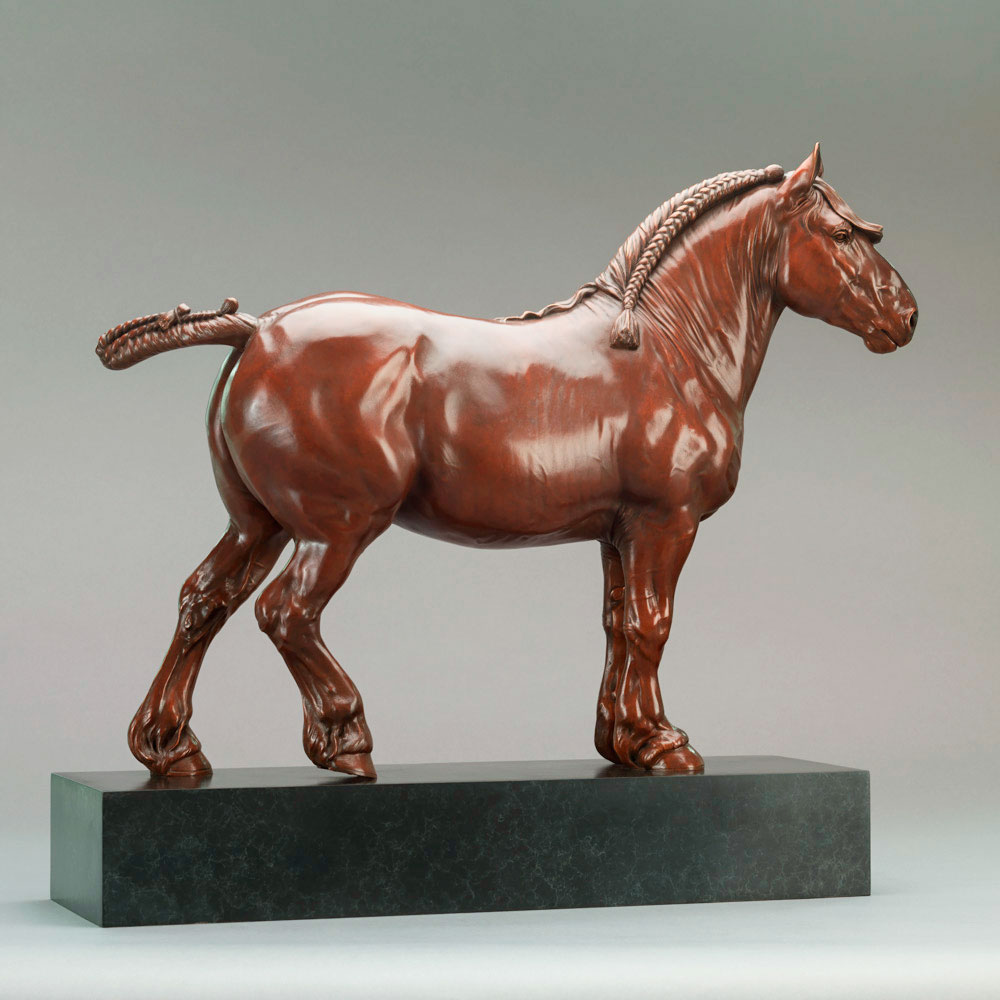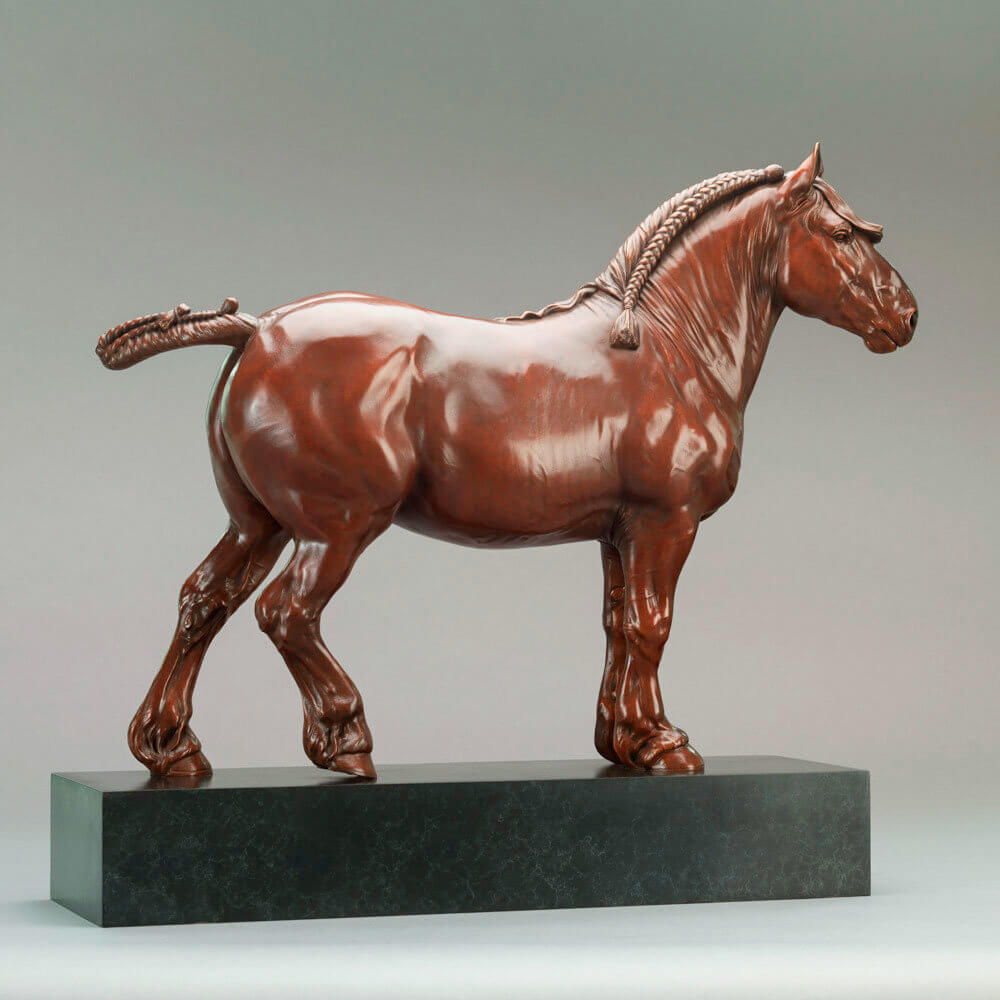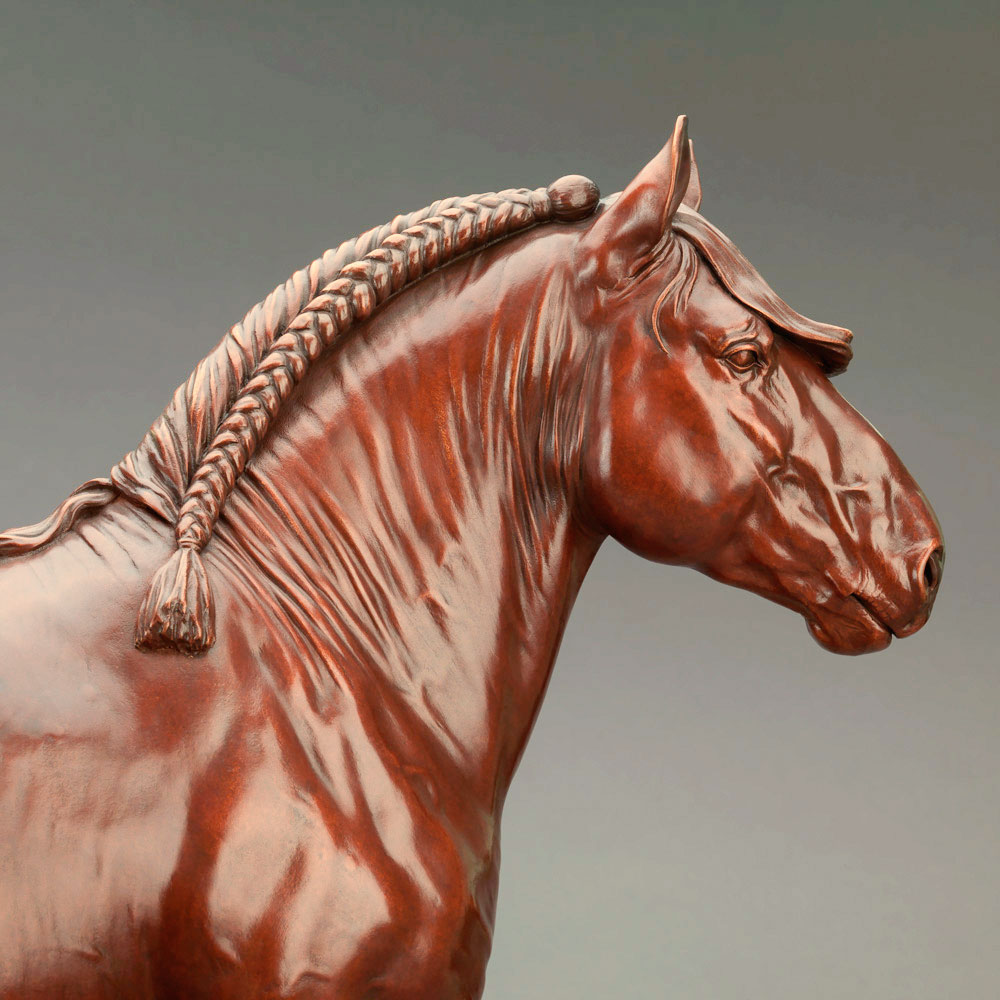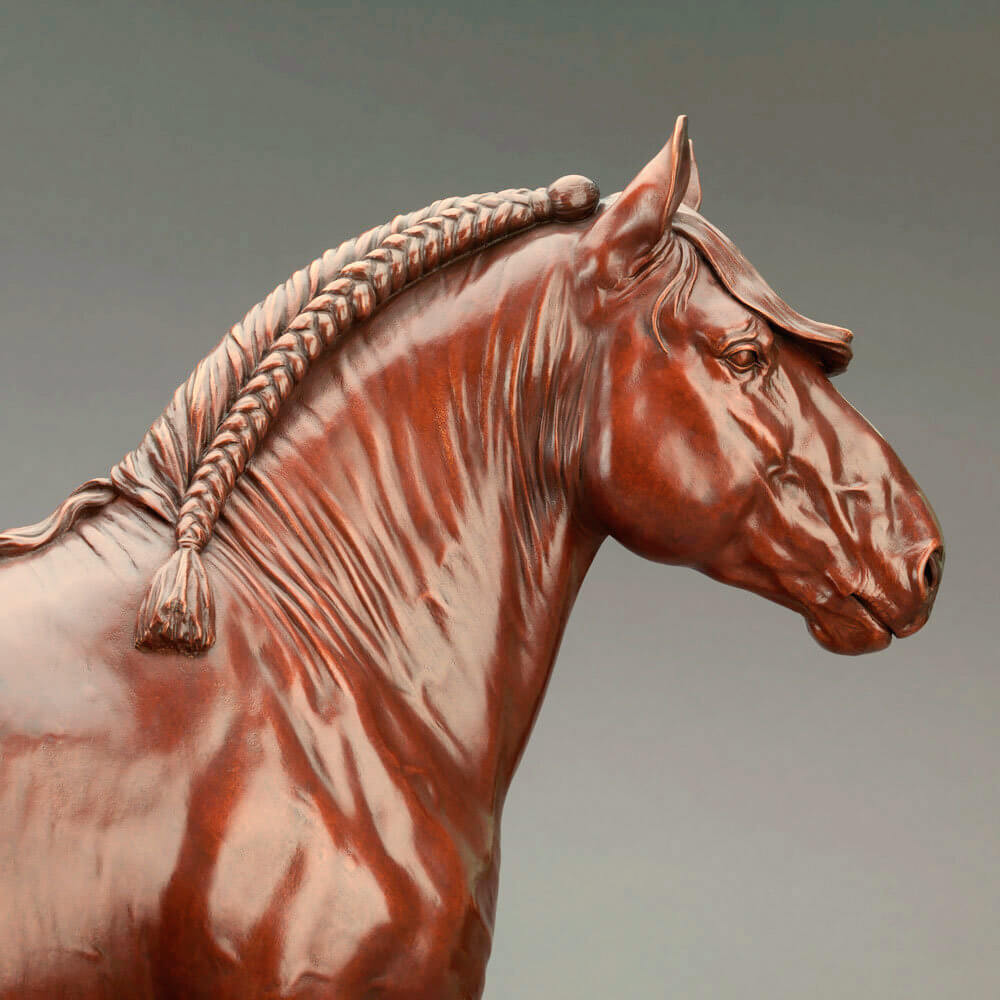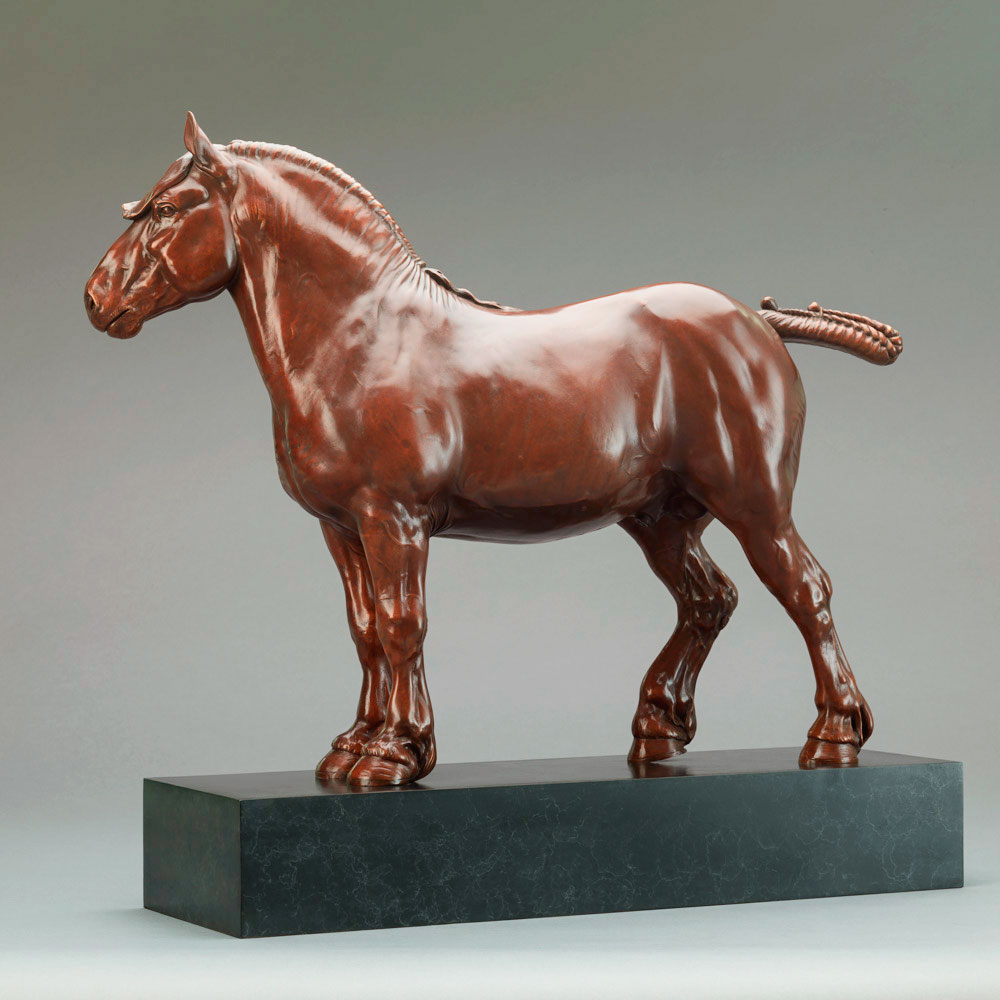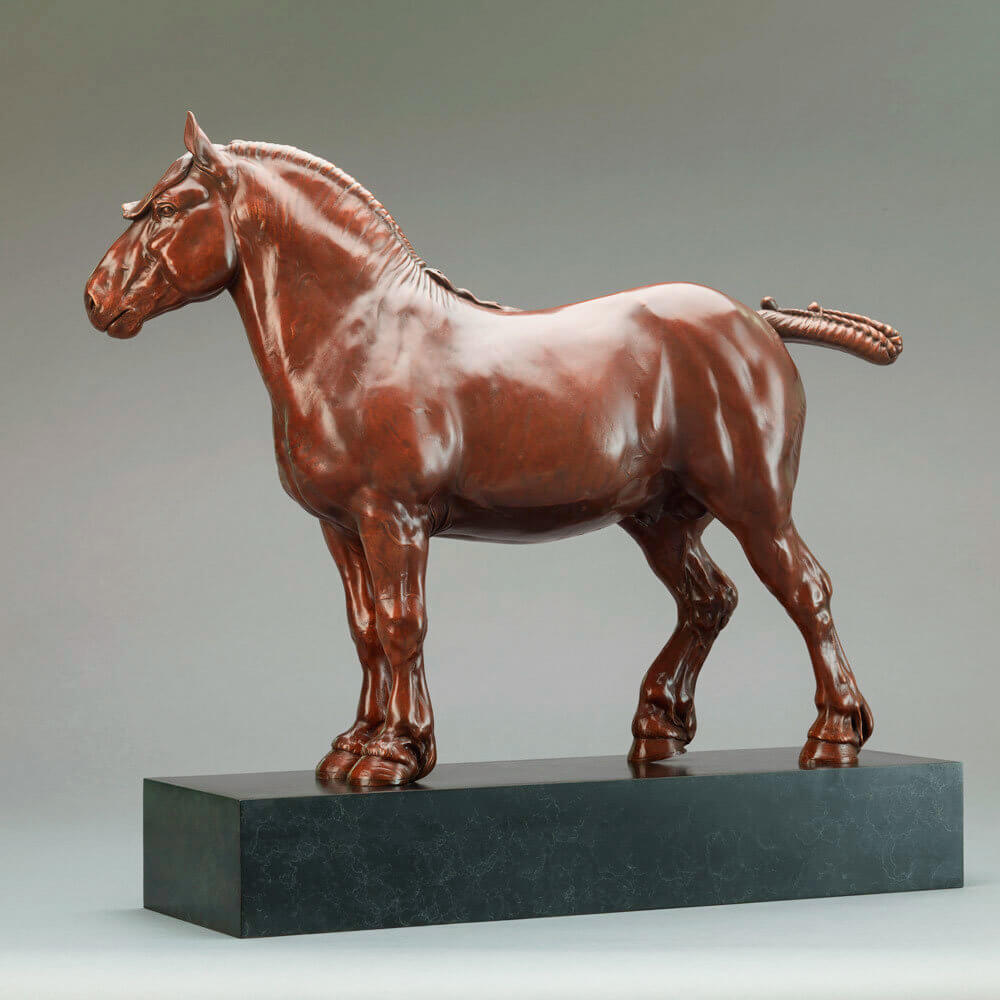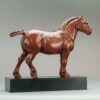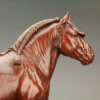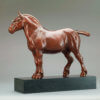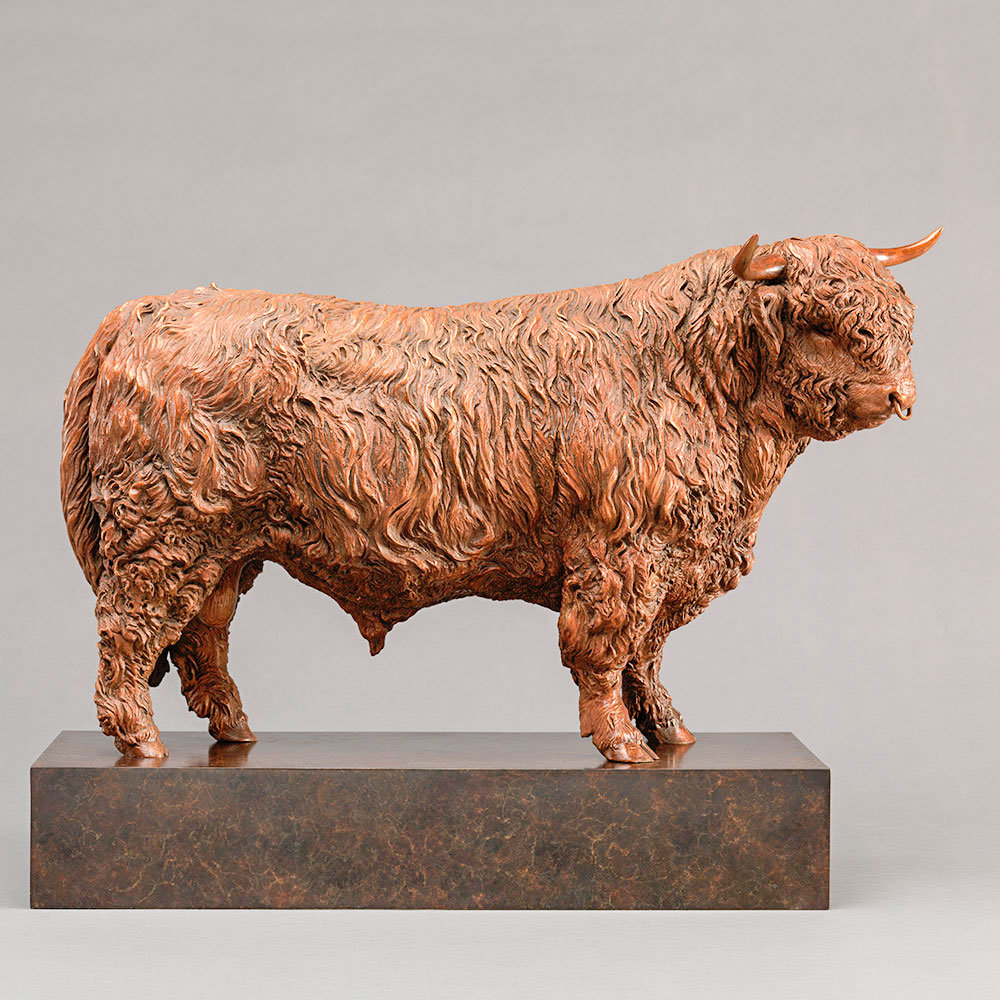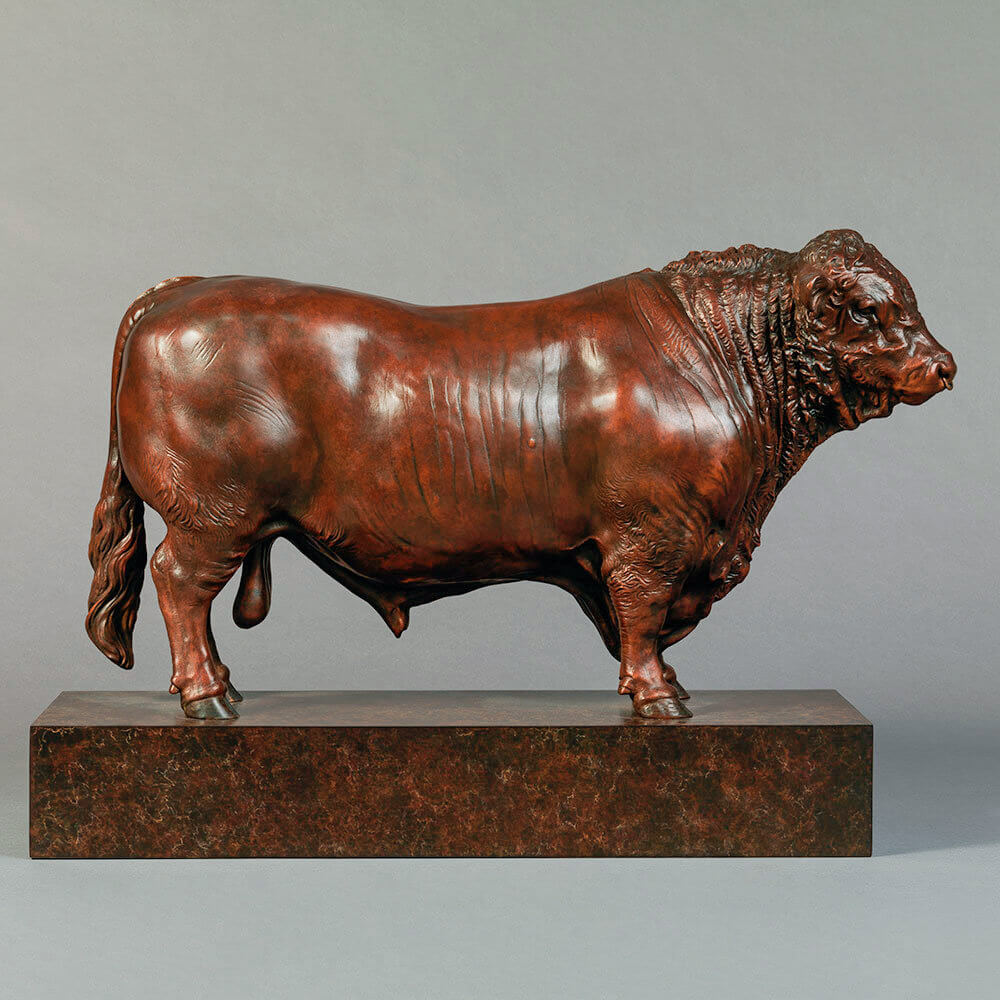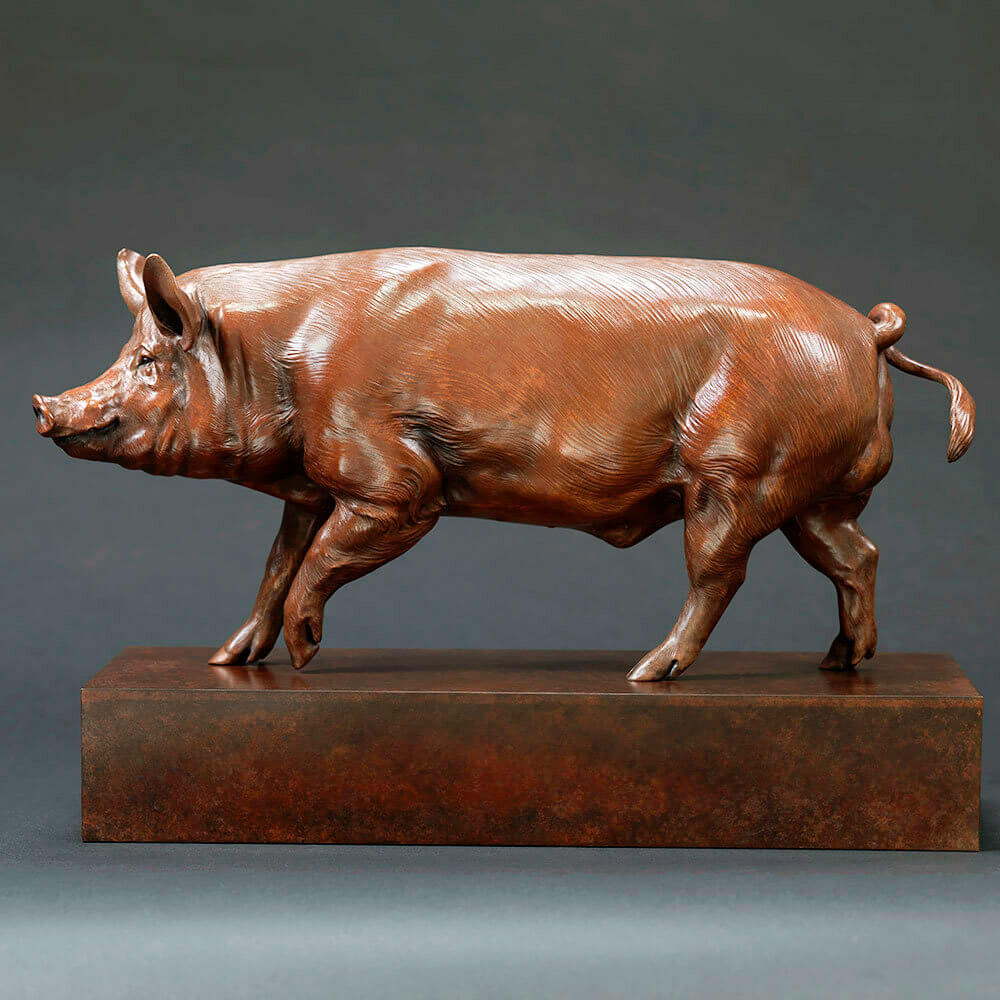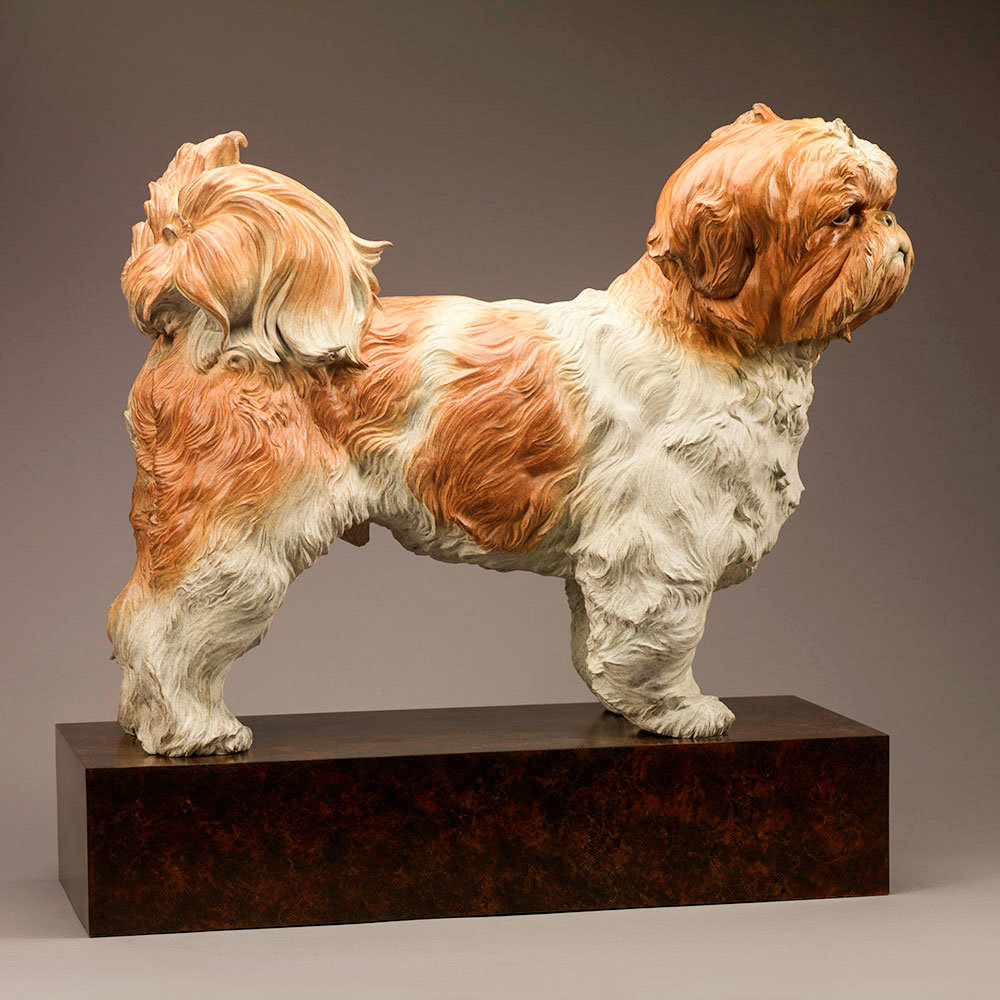Suffolk Punch Horse: Euston Malachite (British Champion Animals Collection)
Suffolk Punch Horse (Euston Malachite)
Dimensions: H 19.5″ L 21″
Bronze: Edition of 12
Price: £18,500
Please click – Ordering – for details of availability, price (if not listed above) and how to order your sculpture.
Description
A True Champion Suffolk
Euston Malachite:
Sire: Samford King Louis. Dam: Euston Amethyst.
3 Year Old Junior Champion Horse – Suffolk Breed Show, Woodbridge 2004
Champion Stallion – Royal Norfolk Show 2006 & 2007
Supreme Champion Suffolk – Suffolk County Show 2008
Champion Stallion – Suffolk Breed Show, Woodbridge 2009
I have loved Suffolk Punch horses ever since I first saw pictures of one, as a young boy in County Durham. To paraphrase HRH Princess Anne in her foreword to, “The Suffolk Punch. An Illustrated History of the Breed” – “The Suffolk Punch is among the noblest of British breeds of horse; containing all the physical attributes essential to a good working horse – style, symmetry and strength, with a good nature and placid temperament”. A view I wholeheartedly share!
Read more...The Suffolk Punch is the oldest breed of heavy horse in Great Britain. Camden’s Britannia states that the Suffolk horse dates back to 1506 and most believe that even then it had a distinctive character. It is certainly mentioned as a pure breed by 1770. All Suffolks alive today trace their male lines back to one stallion, a horse called Crisp’s Horse of Ufford, foaled in 1768.
During the Royal Show at Ipswich in 1934, the highlight was a parade of 300 Suffolks. Subsequently, with the boom in mechanised farming, numbers plummeted. By the mid sixties the breed was on the brink of extinction. Even today, after huge efforts by the Suffolk Horse Society and others to save the breed, there are barely 300 Suffolks in the entire country.
The modern Suffolk stands between 16.1h and 17.2h high. They are always chesnut in colour [traditionally spelled without the central ‘t’] though there are many shades from light to dark. Weighing around a ton, they are shorter, but more massively built than the Shire or Clydesdale, their neck is powerful, well muscled and arched, with sloping shoulders, a short, wide back with a muscular broad croup. Legs are short and immensely strong with minimal feathering on the fetlocks, attached to well formed hooves. Their movement is energetic for such a powerful horse. They mature early and live long.
Euston Malachite, or Rocky, as he is affectionately known, is such an impressive beast – an exciting challenge for any artist! But I was also more than a little nervous, because his owner, Lady Clare Euston [President of the Suffolk Horse Society] had mentioned to Gerry Farrell, whilst visiting the Sladmore, that Euston Malachite is in fact a direct descendant of the Champion Suffolk Stallion, Sudbourne Premier; the same Sudbourne Premier sculpted by Herbert Haseltine in December 1922, as part of his famous series of works, “British Champion Animals”. A revelation which planted the seed that later germinated into this exhibition. So no pressure!
I made the long journey from Devon to Euston, Suffolk, at the end of June, in perfect summer sunshine. I arrived mid afternoon and was met by Lady Euston, who took me down to see Rocky. His handler and co-owner, Simon Juby, was busily plaiting straw into Rocky’s mane and tail – the traditional way to show Suffolks. As I approached, my first impression was of a huge square box of gleaming chesnut muscle. As I moved alongside, I was impressed by the enormous depth and power of his neck; then I saw his head. I don’t think I have ever seen a more beautiful head! Massive, strong, beautifully proportioned, with the gentlest soft brown eyes, what a subject!
As Simon led Rocky off to higher ground, where the light was better, I followed behind, taking photos as we went. The horse moved so gracefully; his hooves were the size of dinner plates, yet he carried himself like a thoroughbred racehorse.
I spent nearly 3 hours, taking notes, a few measurements and over 300 photographs from every conceivable angle and of every conceivable part! He posed beautifully for me, standing in the late afternoon sun, his coat shining like molten copper. Often he would raise one or other of his hind legs slightly, as if he couldn’t wait to be free, which is how I ultimately decided to sculpt him – full of barely contained power and energy. Occasionally Simon would trot him up and down, to release some of this tension and keep him calm, whilst I snapped away. We finished the photography by taking Rocky back to the lower field, where I had first seen him, there he had his braids taken out and his bridle removed and I took my final shots of that beautiful head, whilst he munched on his favourite treat – carrots.
Lady Euston had very kindly offered to let me stay overnight, and that evening I enjoyed excellent company and food with her and her son and daughter, before retiring to my room. As the sun set, I watched swifts flying in over the fields to feed their chicks, which were nesting under the tiles below my window; my head buzzing with thoughts of Rocky and how to sculpt him.
I eventually settled down to sculpt Euston Malachite that December, almost 86 years to the day since Haseltine started his sculpture of Sudbourne Premier.
I chose to sculpt in clay, the subject being such a complex combination of, thinly covered, bone, muscle and sinew, I felt that clay would be the best medium to capture this. I like the way the form can be rapidly established using soft, fresh clay, then gradually refined, modelled and carved, as the clay naturally dries and stiffens.
Initially I approach each new subject more as a scientist than an artist – fascinated by the underlying structure; the skeleton, the musculature, fat deposits, connective tissue, skin, fur, feathers; they all interact to produce the form that I wish to sculpt. Without a proper comprehension of this interaction it would be impossible for me to bring my work to life once the, “Artist” has chosen a pose and composition.
I prefer to work from life, or photographs and memory; I generally don’t use working drawings – minimal thumbnail sketches at most. For me, working drawings are an undesirable middle man – needlessly translating the 3 dimensional image in my mind into 2 dimensions, only to translate it back into 3 dimensions for the finished sculpture.
I quickly worked up a wire armature, matching the proportions to those of Euston Malachite, then built up the main masses of his form, constantly checking and cross referencing with my many photographs [and memory]. By Christmas he was starting to look like a Suffolk. My poor family had to endure me whittling on about what a beautiful horse Malachite was and all the characteristics that I simply must capture, over Christmas lunch! I think they were quite relieved when I went back to work on Boxing Day. I spent a week working on his head, then moved on to refine the musculature of his neck and body, adding all those little touches that would make him uniquely, “Rocky”. Then I moved on to the complex plaits of his mane and tail, which took me far longer than the originals had taken Simon, back in June. By mid January I was ready to tackle the complexities of Malachite’s lower legs. This was the only point at which I really struggled. Despite over 100 reference photos and a fair knowledge of equine structural anatomy [I had recently completed a commission for an anatomical horse] I simply could not work out what the form should be. I was going in circles! In the photographs I was seeing false high spots, caused by sunlight reflecting off Malachite’s glossy coat that contradicted what I knew to be the correct anatomy, making it very difficult to interpret the information in my reference correctly. But a half hour rant to my long-suffering wife, Clare and a long walk did the trick. I returned to work with fresh eyes, and by the end of January the clay of Euston Malachite was completed!
Finally, I chose a rich chestnut red patina for the bronze cast, to match Malachite’s own stunning chesnut red coat. Pangolin foundry rose heroically to the challenge, the finished bronze giving a glimpse of what a truly magnificent horse Euston Malachite is.
